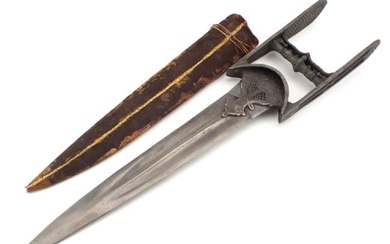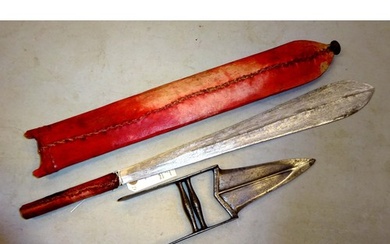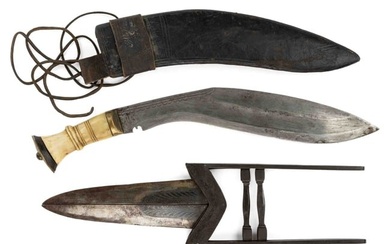Katar
Katar
South India, 17th century
Steel.
Katar of typical South Indian shape, it has a straight double-edged blade with multiple gutters, decorated
with a central scalloped edge reminiscent of a cypress tree. The hilt used
to protect the fist consists of a delicately curved steel plate forming a cat's head at the
end. The typical handle is composed of two vertical scalloped branches,
held by two horizontal tenons adorned with two spheres, allowing a good grip. Visible oxidation.
L. 56 cm
A South Indian katar from the 16th-17th century of the same typology is kept at the Metropolitan Museum in New
York (Inv. N°36.25.904) and published in: Elgood, R. (2004) Hindu Arms and Ritual, Arms and Armour from India 1400-
1685, Netherlands: Eburon Academic Publishers, p. 147, n°15. 4.
Automatically translated by DeepL. To see the original version, click here.
View it on
Estimate
Time, Location
Auction House
Katar
South India, 17th century
Steel.
Katar of typical South Indian shape, it has a straight double-edged blade with multiple gutters, decorated
with a central scalloped edge reminiscent of a cypress tree. The hilt used
to protect the fist consists of a delicately curved steel plate forming a cat's head at the
end. The typical handle is composed of two vertical scalloped branches,
held by two horizontal tenons adorned with two spheres, allowing a good grip. Visible oxidation.
L. 56 cm
A South Indian katar from the 16th-17th century of the same typology is kept at the Metropolitan Museum in New
York (Inv. N°36.25.904) and published in: Elgood, R. (2004) Hindu Arms and Ritual, Arms and Armour from India 1400-
1685, Netherlands: Eburon Academic Publishers, p. 147, n°15. 4.
Automatically translated by DeepL. To see the original version, click here.







